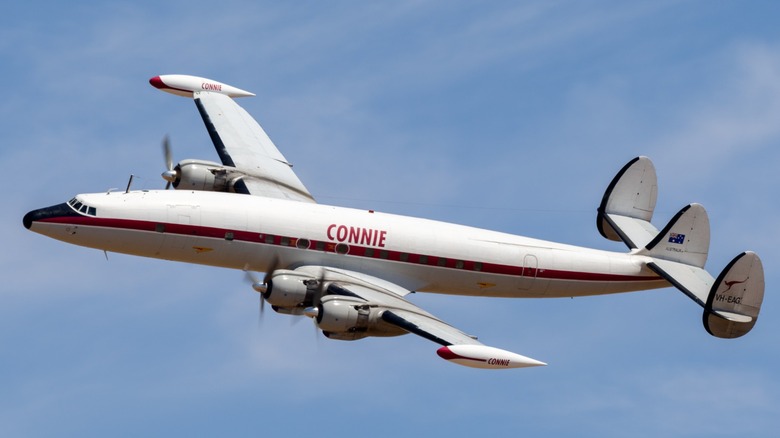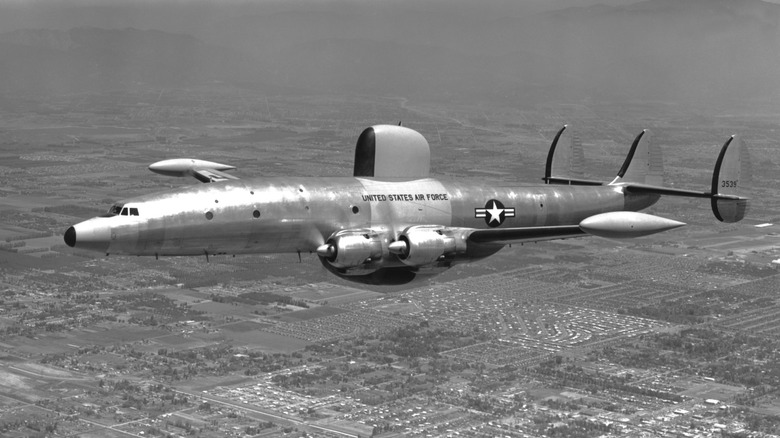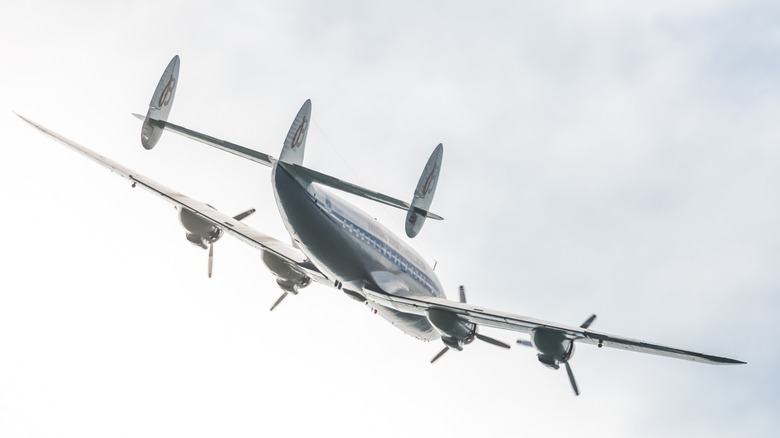How The Lockheed Constellation Made A Unique Mark On Aviation History
Before the likes of the Boeing 747 and Airbus A380 caught the attention of passengers, the Lockheed Constellation was an airliner that many people dreamed of boarding. It was one of the last piston-driven airliners to grace the skies before the faster jets and more fuel-efficient turboprops took over commercial routes.
Most people today no longer think of this four-engine classic when it comes to iconic planes. But between the 1940s and the wide adoption of jets like the Boeing 707 in the late 1950s, the Connie, as the Lockheed Constellation was affectionately called, revolutionized passenger air travel in the U.S.
The plane actually resulted from a 1939 request by the legendary billionaire and aviator Howard Hughes, who was the majority stockholder of TWA at the time. According to Lockheed Martin, he wanted a plane that could seat 20 passengers and fly 6,000 pounds of cargo across the U.S. nonstop. Hughes saw this as a way to one-up the competition, and reportedly wanted to have the plane developed in secret and not sold to anyone until his airline received 35 units.
However, Lockheed wasn't satisfied with delivering what was asked of it and went above and beyond. Because of this, the Connie had advanced features, like hydraulic controls, speeds faster than some contemporary fighters like the Japanese Zero, and a pressurized cabin that allowed it to fly above most rough weather. Although Boeing was the first to build a pressurized airliner with the Boeing 307, the Constellation was the far more popular option among airliners.
It's more than just an airliner
The Connie's pressurized cabin was the game changer that made it beloved by crews and passengers alike. This feature allowed the plane to fly at altitudes over 20,000 feet, meaning it could fly above the clouds and reduce turbulence. But before Hughes could take delivery of the aircraft, World War II changed things. Japan's bombing of Pearl Harbor dragged America into the war, with the U.S. military orders taking precedence. The plane was called the C-69, and it set a transcontinental speed record going from Burbank, California, to Washington, D.C., in less than seven hours — averaging 331 mph on the journey.
The R-3350 engines used in the Connie were troublesome at first, though, so the U.S. Army Air Forces preferred the Douglas DC-4-based C-54 as its primary long-range air transport. Nevertheless, later variants of the Constellation became a mainstay for the military, where they were used as transports and long-range patrol planes. There were even some versions modified with some carrying onboard radar to monitor the battlefield from above.
One even served as the personal transport of Gen. Douglas MacArthur when he deployed as Supreme Commander Allied Powers during the Korean War. The Constellation was also the first aircraft to be called Air Force One when it was carrying President Dwight D. Eisenhower.
A Unique Shape and Profile We Probably Won't See Ever Again
One of the things that made the Connie stand out from most during that time (and even today) is its unique, dolphin-shaped fuselage. This sleek, aerodynamic shape meant that the aircraft's bulkheads were all completely different from each other and were a far cry from the cigar-shaped cylinders that almost all modern airliners have. It also featured three tail fins — most Lockheed products back then featured its signature twin-tail design, but the size of the plane meant it needed to be supplemented with a central tail fin. The engineers could have enlarged the vertical stabilizers instead, but that would make them taller and not fit in TWA's existing hangars designed for smaller planes without needing to make bigger doors.
The Connie was eventually supplanted by much faster jet aircraft — first in long-haul international flights, then in domestic passenger service. Its final flight between Philadelphia and Kansas City was scheduled May 11, 1967. But even after that, these airplanes continued to serve in the military, with the Air Force version retired in 1977.
At the moment, only two examples of the legendary Constellation remain airworthy: VH-EAG "Southern Preservation", operated by the Historical Aircraft Restoration Society in Australia, and Gen. MacArthur's former transport, N422NA "Bataan", which is kept in flying condition by the Planes of Fame Air Museum in California. You can also find several non-flying examples around the world, like the Columbine III that President Eisenhower used to fly in, which is now displayed at the National Museum of the U.S. Air Force in Dayton, Ohio.


